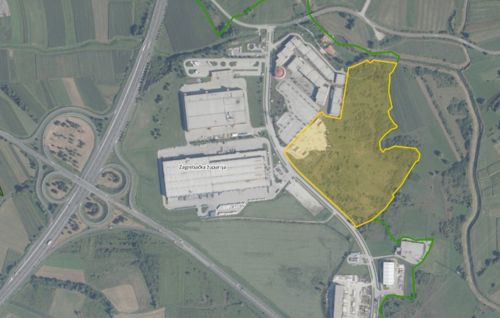The shape of shopping to come
ReportRetailers are keener than ever to gather information on their clients so that they can tailor their product ranges to the needs of individual consumers. Many retailers have also already created smartphone apps to help their clients connect with their brand. To extend customer dwell time in their stores, retailers are extending the goods and services their stores offer such as coffee served in bookstores and clothes sold in drugstores. Instant messaging and artificial intelligence are being used to make brands accessible in the fastest and easiest way at any time, which is an extremely important factor in improving the customer experience. Personalisation depends on knowing the customer and presenting them with the experience that they are looking for.
Geo-fences
Geo-fences are virtual geographic boundaries, defined by retailers or shopping centre owners through the use of GPS or RFID tags. Messages can be sent to a mobile device whenever it leaves or enters a particular area. Such geo-fencing is set to become more widespread over the next five years. Aggregated data can be used to answer questions such as, where shoppers come from before they visit a store, where they go after having visited a particular shopping centre and what neighbourhoods they live and work in. Geo-fencing allows retailers to profile shoppers and understand their behaviour so that they can tailor their goods and promotions to fit precisely.
Mobile Payment
Mobile payments will become nearly universal and this will have a clear impact on bricks and mortar retailers over the next five years. Retailers and major banking institutions are racing to create their own systems to satisfy consumer demand, reduce transaction fees and take a share of the mobile retail pie that Apple and Google have taken for themselves.
Drones
Drones are being used more and more by stores. One top retailer has filed a patent for inventory management with drones being used to fetch customer orders inside a big box store. Sensors and 3D mapping would prevent the drones colliding with each other or with the product shelves. Drones could also be used to enhance security and track customer movements. They could also be used to patrol store perimeters and car parks transmitting video back to the store. They can also be used in site selection and construction management.
3D printing
With 3D printing consumers become manufacturers, which has the potential to revolutionise retail. But although its future impact will be huge, it is at least a decade away before the technology will become prevalent and affordable. 3D printing could trigger a third industrial revolution, allowing everyone to fabricate three-dimensional objects on-demand at home or in a store. For the consumer, 3D printing promises faster, cheaper and more customisable goods. For retailers, it could offer on-demand manufacturing and on-the-spot product personalisation to appeal to shoppers. But 3D printing has yet to fulfil its promise and is still not widely used except for among hobbyists and specialists.
AR vs VR
Virtual reality is also going to shape the e-commerce retail of the future and may help to decrease demand for retail space over the next 10 to 20 years. Augmented reality is also set to change how we shop in the real world over the next 10 years. The potential AR and VR to tailor the customer experience cannot be underestimated. VR immerses the user in an entirely simulated world, but requires headsets and controllers. This makes VR an ideal platform for gaming and for use in movies and TV shows. VR is not only transports users to fantastical worlds, but can also serve a practical retail purpose by allowing them to visit malls from the comfort of their sofas. Startups like London-based Trillenium have experimented with VR devices, to bring customers to virtual malls, where they can walk through virtual stores, examine virtual versions of real-world products and make purchases just as if they were in a bricks and mortar store. In the world of retail, AR, which creates an overlay of online data on the real world, could revolutionise the shopping for clothes, cosmetics and home goods by showing shoppers these products either on their own or in the shopper’s own home. The IKEA Place app does exactly this letting customers see couches or rugs as they would look in their own living rooms, while Sephora’s Virtual Artist app allows shoppers to apply makeup in the virtual world without them ever stepping into a store. US-based DIY retailer Lowe’s is using AR in store with an app to show shoppers the fastest way to the item they are looking for.
Artificial Intelligence
As artificial intelligence and machine learning are becoming more sophisticated and are likely to have a big impact on retail over the next ten years as it becomes increasingly used in ever more everyday applications. Already a number of retailers are making use of machine learning and have teamed up with IBM to use its Watson system, (a chatbot program that beat all human opponents in the TV game show ‘Jeopardy’). Macy’s On Call will answer questions and guide shoppers to where they want to go. Customers only needs to open the store’s site on any smartphone and type in a question. No other human interaction is needed. Macy’s On Call is a novel way for a store to interact with consumers on a personal level, thus boosting customer engagement.
Dynamic pricing
Imagine a world where prices react to supply and demand on a real-time basis. Dynamic pricing is something that has already been embraced online so it is unlikely to change the e-commerce market but in 10 to 15 years time, when the system becomes more accessible and affordable, it could have a more radical effect in real-world stores. Prices would change based on many more variables such as the time of day and local demand. Online retailers have already blazed the trail since they have greater access to data and computing power. Dynamic pricing depends on having access to large amounts of real time data and just as important is a system capable of interpreting it to set prices in such a way as to beat the competition. In the physical world, one particular bookstore doesn’t even use price tags, which allows the retailer to charge different customers different prices.
Internet of Things
The growth of IoT is changing urban planning, security services, medicine, logistics and shopping. Sensors in homes, clothing, cars, phones and even individual products and store aisles, can communicate and relay information to a retail distribution system. This wealth of IoT data can be used to make decisions about what to sell at what price to whom and when. The transition to an IoT world has already begun, albeit modestly. Considering the sheer complexity of the huge volumes of data with countless devices interacting between themselves, as well as the unresolved issues of security and privacy, it will be at least 10 to 15 years before the retail industry sees the biggest impact.
Cashierless stores
Walking out of a store without having to stop and pay sounds great, but in the short-term, such systems are too expensive for widespread adoption. Don’t expect widespread use of such system for around another 20 years. The cashierless shopping has been just around the corner for quite some time, and recent moves by major retailers have increased expectations. In major airports across the globe, travellers can sit down at a restaurant table to be greeted with a touch-screen that displays the menu and allows pay. ν




















































